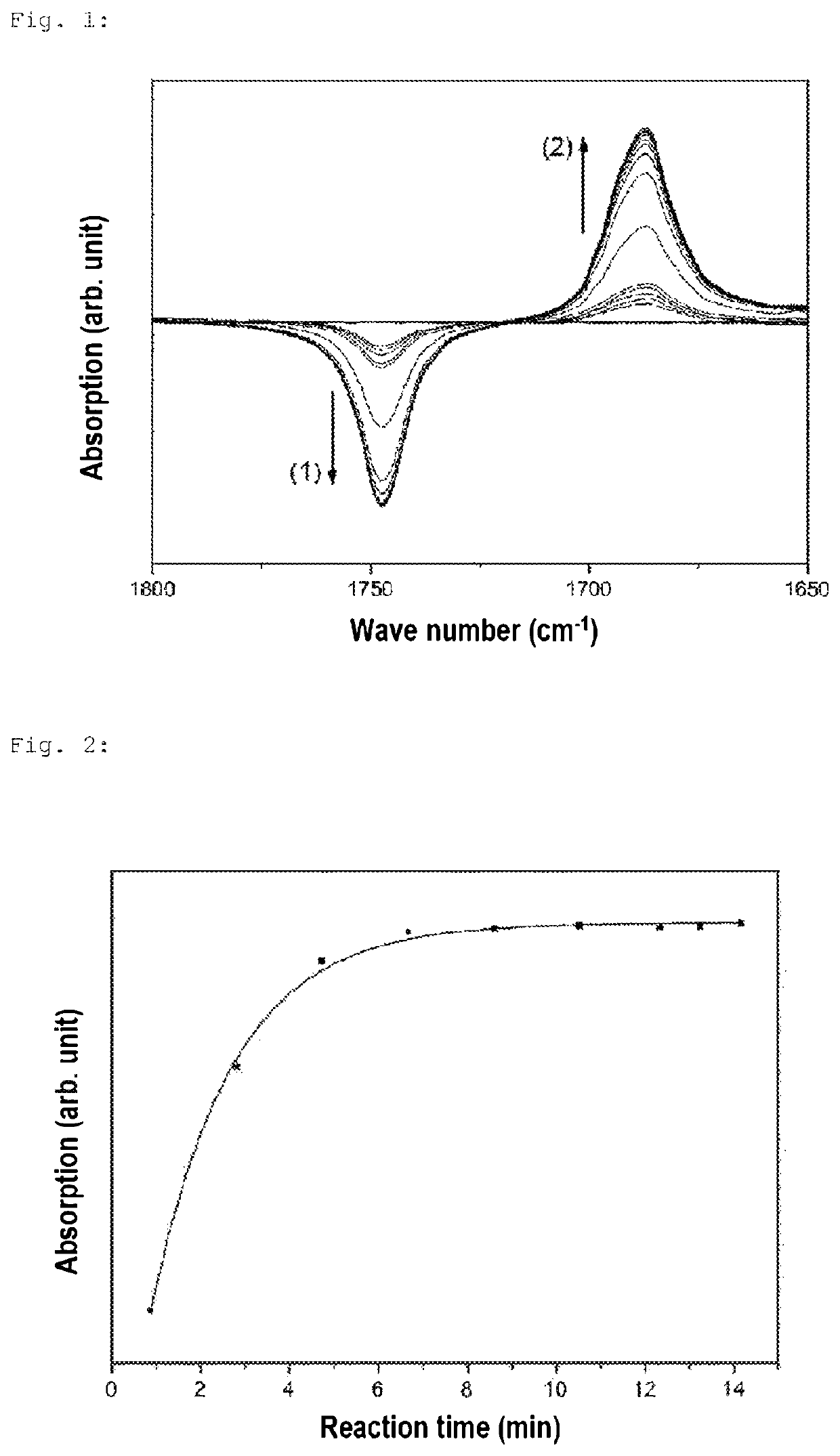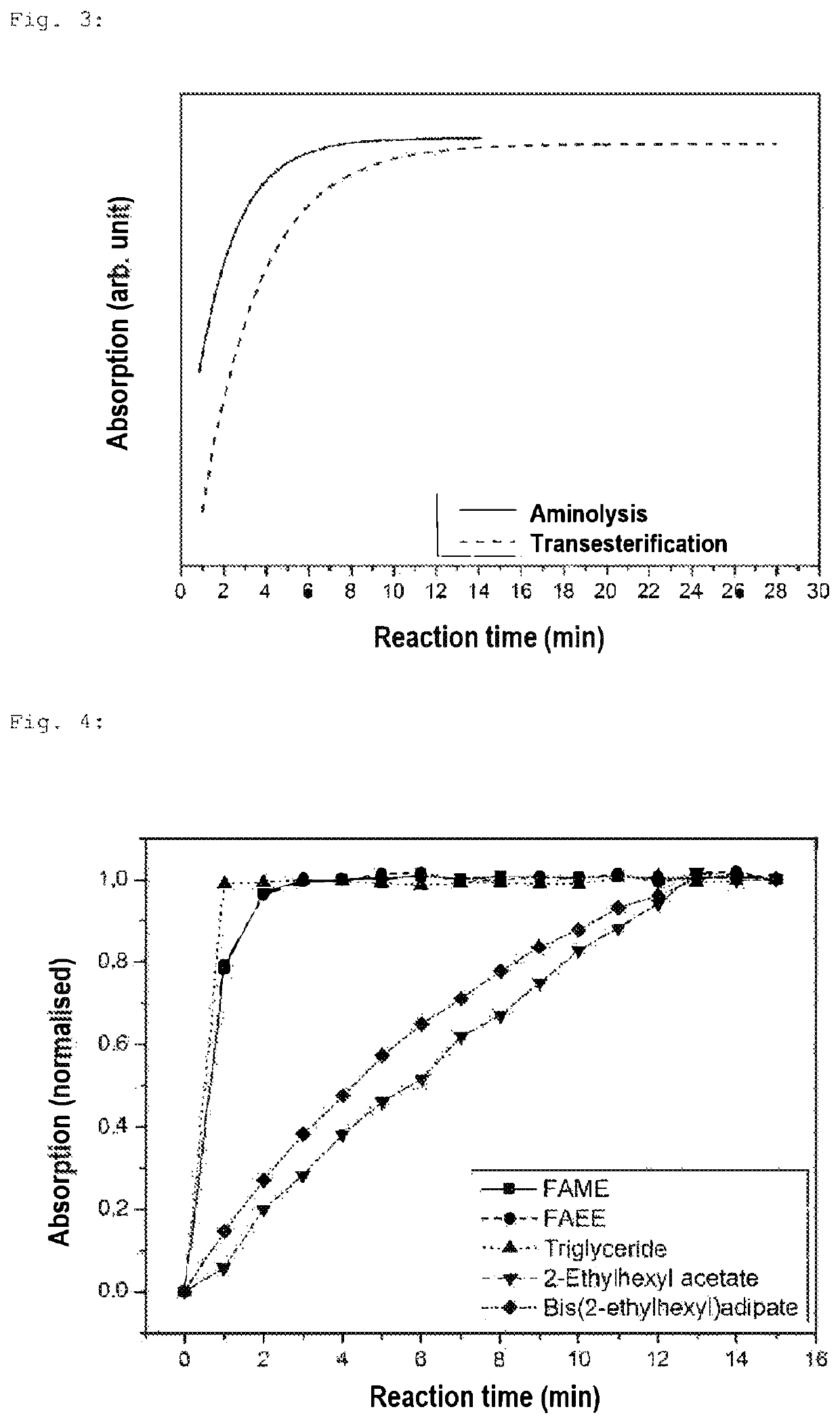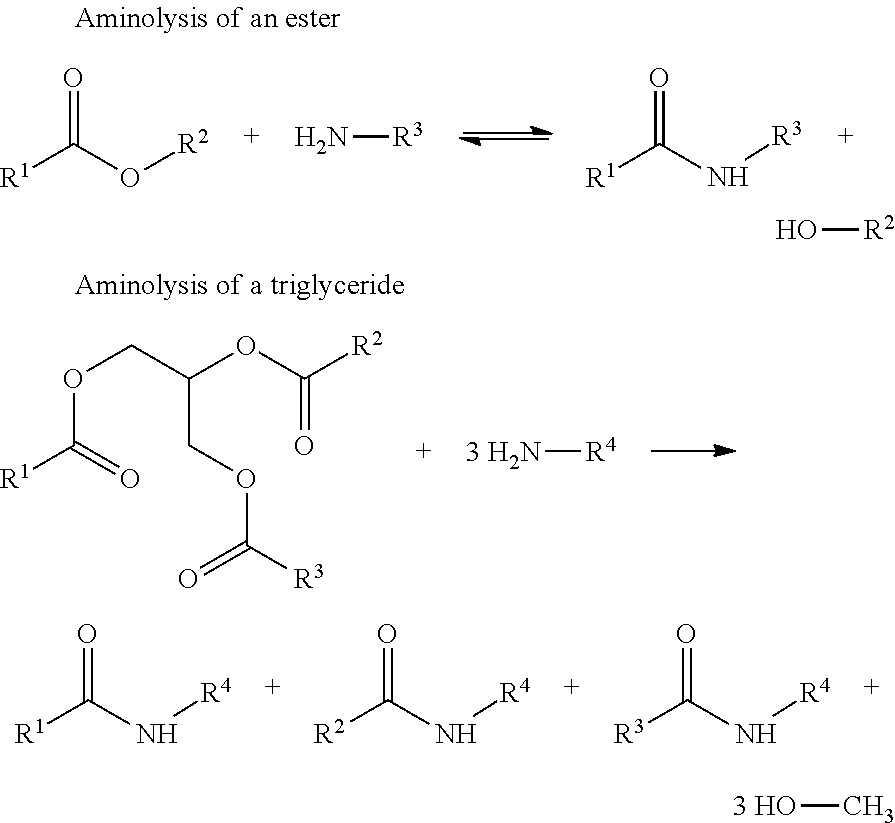Process for quantitative determination of fatty acid esters in fuels
a technology of fatty acid esters and quantitative determination, which is applied in the direction of material testing goods, analysis by subjecting materials to chemical reactions, instruments, etc., can solve the problem of insufficient selectivity
- Summary
- Abstract
- Description
- Claims
- Application Information
AI Technical Summary
Benefits of technology
Problems solved by technology
Method used
Image
Examples
Embodiment Construction
[0041]While the making and using of various embodiments of the present invention are discussed in detail below, it should be appreciated that the present invention provides many applicable inventive concepts that can be embodied in a wide variety of specific contexts. The specific embodiments discussed herein are merely illustrative of specific ways to make and use the invention and do not delimit the scope of the invention.
[0042]The present invention will now be explained in more detail with the aid of the cited examples, although the invention is not limited to the examples.
[0043]The following determinations were carried out:[0044]FAME in jet fuel by means of aminolysis[0045]FAEE in jet fuel by means of aminolysis[0046]glyceryl trioleate in jet fuel by means of aminolysis[0047]FAME in diesel by means of aminolysis[0048]FAME in jet fuel by transesterification
[0049]For the determination of FAME in jet fuel by means of aminolysis, additional measurements were carried out:[0050]approv...
PUM
| Property | Measurement | Unit |
|---|---|---|
| reaction rate | aaaaa | aaaaa |
| concentration | aaaaa | aaaaa |
| IR spectroscopy | aaaaa | aaaaa |
Abstract
Description
Claims
Application Information
 Login to View More
Login to View More - R&D
- Intellectual Property
- Life Sciences
- Materials
- Tech Scout
- Unparalleled Data Quality
- Higher Quality Content
- 60% Fewer Hallucinations
Browse by: Latest US Patents, China's latest patents, Technical Efficacy Thesaurus, Application Domain, Technology Topic, Popular Technical Reports.
© 2025 PatSnap. All rights reserved.Legal|Privacy policy|Modern Slavery Act Transparency Statement|Sitemap|About US| Contact US: help@patsnap.com



